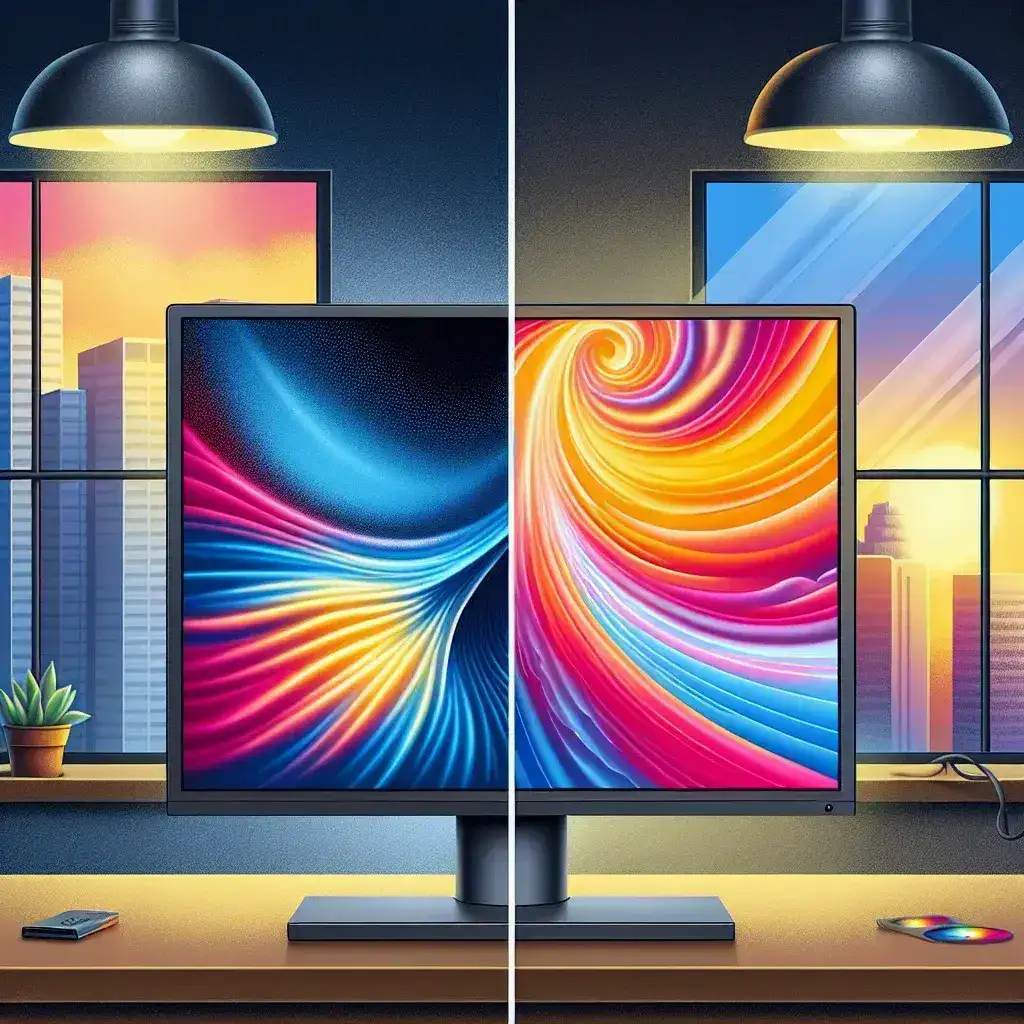Introduction
In the world of display technology, the choice between monitors with anti-glare coatings and those with glossy screens can be pivotal depending on your use-case scenarios. Both approaches have their advantages and disadvantages that cater to different preferences and environments. This comprehensive guide will help you understand these differences better, aiding you in making a more informed decision.
The Basics: Anti-Glare vs. Glossy Screens
Anti-glare screens are coated to reduce the amount of light reflection, while glossy screens are untreated and thus more reflective. This core difference brings about numerous other distinctions that are worth exploring in detail:
| Feature | Anti-Glare Screens | Glossy Screens |
|---|---|---|
| Light Reflection | Reduced | High |
| Color Vibrancy | Muted | Enhanced |
| Eye Strain | Minimized | Can be significant |
| Environmental Suitability | Bright rooms | Dimly lit rooms |
Light Reflection
Anti-glare screens are designed to diffuse light. These screens are highly effective in environments where lighting conditions are less controlled, such as offices with overhead lighting or rooms with multiple windows. On the contrary, glossy screens reflect light back more directly, which can be a nuisance in well-lit environments but offer a superior and sharper onscreen image in controlled lighting.
Color Vibrancy
Glossy screens generally provide more vivid colors and deeper blacks. The reflective surface helps to enhance color and contrast. Therefore, glossy screens are often preferred by graphic designers, photographers, and video editors who seek more accurate color representation. Anti-glare screens, while reducing reflections, can slightly mute the vibrancy of colors. This is why they are often preferred for text-heavy tasks, such as reading and writing, where sharpness is less crucial.
Eye Strain
Eye strain is a common issue for those who spend long hours staring at monitors. Anti-glare screens significantly reduce glare and reflections, which can help to minimize eye strain. Glossy screens, on the other hand, can cause more eye strain due to increased light reflection and glare. Therefore, for users who spend extensive time on computers, anti-glare screens could be a more comfortable option.
Environmental Suitability
Your primary environment should heavily influence your choice between an anti-glare or glossy screen. Anti-glare screens are suited for diverse lighting conditions but perform exceptionally well in bright environments where controlling light isn’t an option. In contrast, glossy screens shine (pun intended) in dark or dimly lit environments where reflections and glare are minimal, delivering a crisper and more immersive viewing experience.
Performance in Varied Scenarios
Office Use
For office use with overhead fluorescent lighting or sunlight pouring in from windows, anti-glare screens stand out as the better choice. The reduced reflection ensures that the screen content is visible without too much strain on the eyes.
Creative Work
Professionals in creative industries might lean towards glossy screens for their superior color accuracy and vibrancy. These screens display sharper images, making them ideal for photo editing, video production, and other visual arts.
Gaming
Gamers often prefer glossy screens due to their enhanced color properties and higher contrast ratios. These features contribute to a more immersive and detailed gaming experience. That being said, some gamers might still choose anti-glare screens, especially if they game in brighter environments that could cause reflections on glossy surfaces.
Technological Advancements
Recent developments have brought about hybrid screens that try to offer a middle ground. Some monitors now feature a semi-gloss finish, which provides a balance between anti-glare capabilities and color vibrancy. While semi-gloss may not reach the extreme benefits of either category, it serves as a viable compromise for those who need both reduced glare and decent color performance.
Longevity and Maintenance
Anti-glare screens generally require less maintenance in terms of cleaning. Their matte finish can hide fingerprints and smudges better than glossy screens, which often show every tiny mark. However, it’s worth noting that anti-glare coatings can occasionally wear off over time, especially with frequent cleaning.
Cost Considerations
In most cases, anti-glare screens come at a slightly higher cost due to the additional coating process. However, this can be a worthy investment considering the enhanced comfort and usability. On the other hand, glossy screens might be more budget-friendly and still offer excellent visual performance in the right conditions.
Making the Right Choice for You
At the end of the day, the choice between an anti-glare and a glossy screen boils down to your specific needs and environment. Here are some quick pointers to guide your decision:
- If you work in a bright environment: Opt for an anti-glare screen.
- If color accuracy and vibrancy are your top priorities: Choose a glossy screen.
- If you spend long hours on the computer: An anti-glare screen might be more comfortable for your eyes.
- If budget is a concern: Glossy screens are typically less expensive.
Conclusion
Understanding the differences between monitors with anti-glare coatings and those with glossy screens is key to optimizing your viewing experience. While anti-glare screens offer reduced reflections and increased comfort in various environments, glossy screens provide enhanced color vibrancy and are generally more budget-friendly. By considering your specific needs and usage scenarios, you can choose the best monitor for your work, entertainment, or general use.

